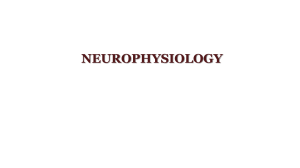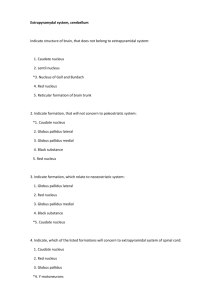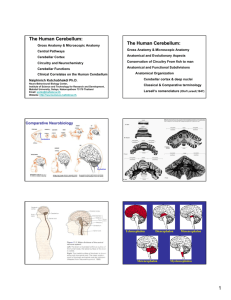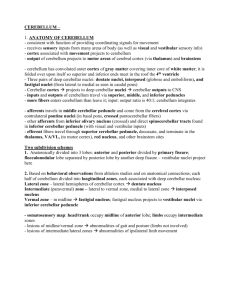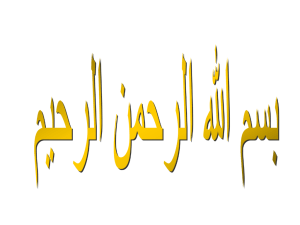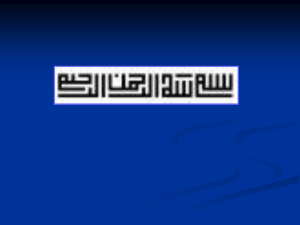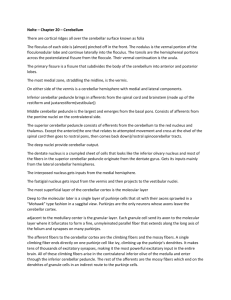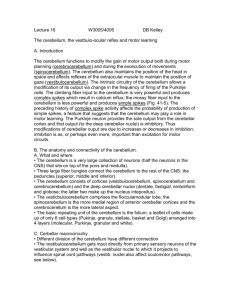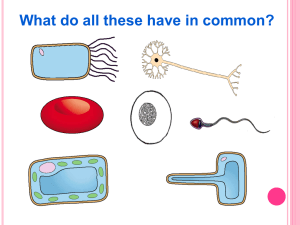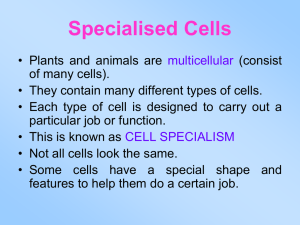Cerebellum
advertisement
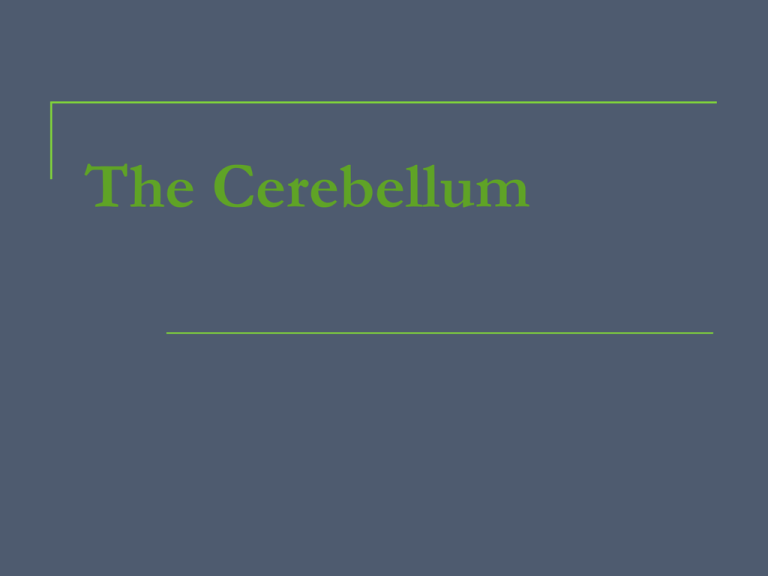
The Cerebellum Position Lies above and behind the medulla and pons and occupies posterior cranial fossa Its surface is high convoluted, forming folds or folia, being oriented transversely Cerebellum External features Consists of two cerebellar hemisphere united in the midline by the vermis External features Three peduncles Inferior cerebellar peduncle -connect with medulla and with spinal cord, contain both afferent and efferent fibers Middle cerebellar peduncle -connect with pons, contain afferent fibers Superior cerebellar peduncle -connect with midbrain, contain mostly efferent fibers External features Tonsil of cerebellum two elevated masses on inferior surface of hemispheral portion just nearby foramen magnum Lobes Two deep fissures Primary fissure Uvulonodular fissure Three lobs Flocculonodular lobe Anterior Posterior lobe Lobes Anterior lobe corpus of cerebellar Primary fissure Posterior lobe Flocculonodular lobe Posterolateral fissure Internal structures Gray matter Cerebellar cortex Cerebellar nuclei Dentate nucleus Fastigial nucleus Emboliform nucleus Globose nucleus White matter Internal structures Cerebellar cortex Fastigial nucleus Globose nucleus Dentate nucleus medullary center Emboliform nucleus Deep Nuclei 1. fastigial nucleus 2. globose nucleus 3. emboliform nucleus 4. dentate nucleus Three functional divisions Lateral zone Intermediate zone Vermis Vestibulocerebellum Archicerebellum Flocculonodular lobe Spinocerebellum Paleocerebellum Vermis and intermediate zone Cerebrocerebellum Neocerebellum Lateral zone Flocculonodular lobe Cerebellar divisions Spinocerebellum: Vermis Intermediate hem. Cerebrocerebellum: Lateral hem. Spinocerebellum (Vermis + Intermed. Hem) Control of limbs and trunk Cerebrocerebellum (Lateral hemisphere) Planning of movement+ Vestibulo-cerebellum (Floculo-nodular lobe) IVth vent Vermis Intermediate hem. Lateral hem. Control of eye & head movements Balance Floculo-nodular lobe Connections and function of cerebellum Vestibulocerebellum Connections Afferents: receive input from vestibular nuclei and inner ear. Efferents: projects to the vestibular nucleus → vestibulospinal → motor neurons of anterior horn Function: involved in eye movements and maintain balance Connections and function of cerebellum Spinocerebellum Connnection Afferents: receive somatic sensory information via spinocerebellar tracts Efferents: Fastigeal reticular and fastigial vestibular pathways: Vermis projects to the fastigial nucleus → vestibular nuclei and reticular formation → vestibulospinal tract and reticulospinal tract → motor neurons of anterior horn Intermediate zone projects to the interposed nuclei Globose- emboliform-rubral pathway: Contralateral red nucleus → rubrospinal tract →motor neurons of anterior horn Function: play an important role in control of muscle tone and coordination of muscle movement on the same side of the body Connections and function of cerebellum Cerebrocerebellum Connection Afferents: receives input from the cerebral cortex via a relay in pontine nuclei(corticopontocerebellar pathway) Efferents: (dentothalamic pathway): dentate nucleus → contralateral thalamus → primary motor cortex → corticospinal tract → motor neurons of anterior horn Function: participates in planning movements summary 1. 2. 3. 4. Cerebellar efferent fibers: Globose-emboliform-rubral pathway Dentothalamic pathway Fastigial reticular pathway Fastigial vestibular pathway summary 1. 2. 3. Cerebellar afferent fibers: Afferent fibers from cerebral cortex: corticopontocerebellar pathway. Afferent fibers from spinal cord: Anterior and posterior spinocerebellar tracts Afferent fibers from vestibular nerve Pyramidal Tract and Associated Circuits upper motor neuron UMN BASAL GANGLIA Cerebellum pyramidal tract lower motor neuron UMN Cerebellum Function Maintenance of Equilibrium - balance, posture, eye movement Coordination of movement of walking and posture maintenance - posture, gait Adjustment of Muscle Tone Motor Learning – Motor Skills Balance Motor Skill Pablo Casals Cerebellum Clinical Syndromes 1-Ataxia: incoordination of movement - decomposition of movement - tremor - past-pointing 2- dysdiadochokinesia 3-Hypotonia, Nystagmus 4- dysarthria Posture Gait – Ataxia a d b c Cerebellar Ataxia Ataxic gait and position: Left cerebellar tumor a. Sways to the right in standing position b. Steady on the right leg c. Unsteady on the left leg d. ataxic gait
